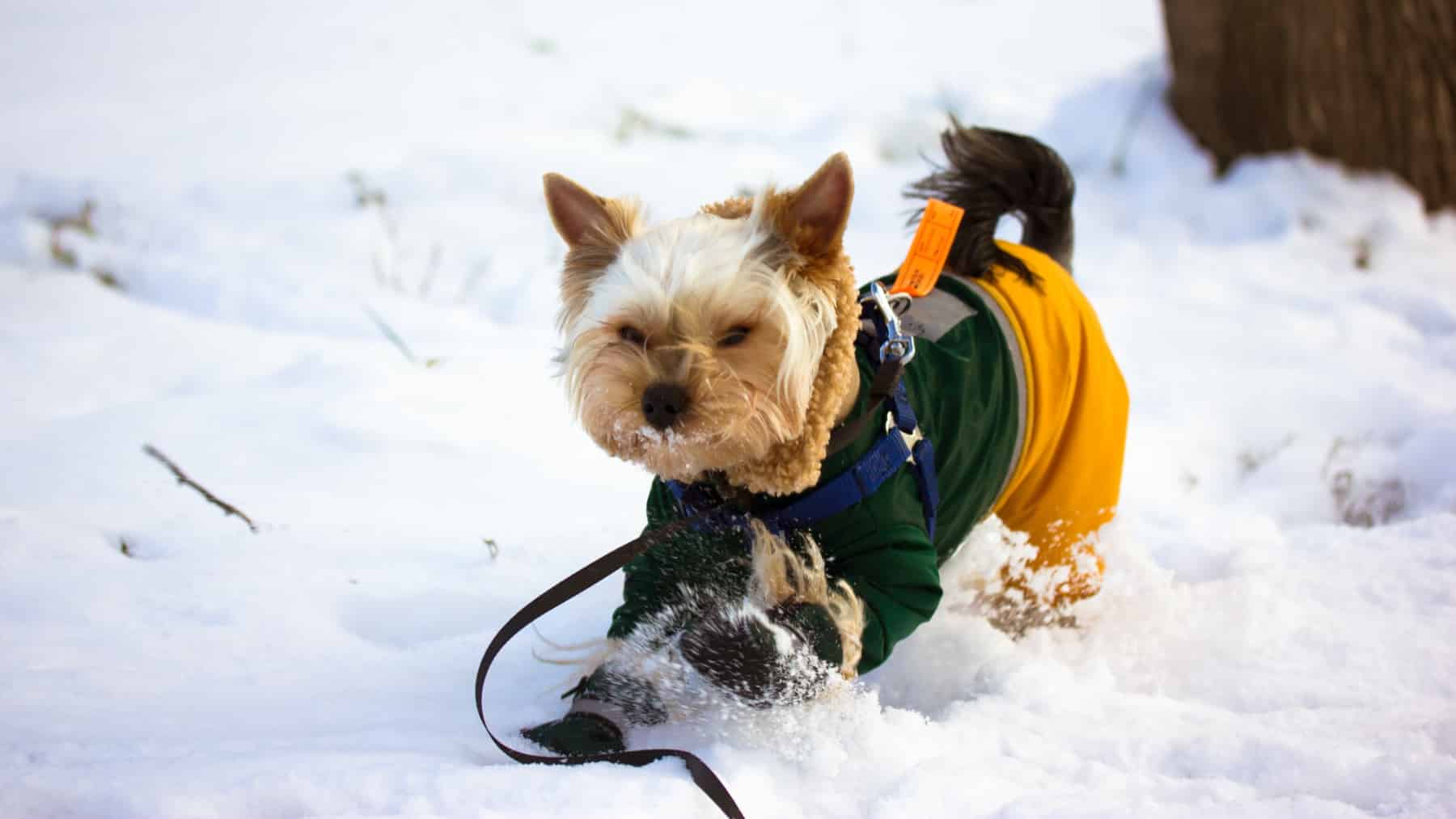The first snowfall of the year is always a magical moment. It doesn’t matter that it brings months of cold weather, frozen puddles, and hours spent clearing the path in front of our house; we can’t help but wake up in the morning and feel childlike excitement when we look out the window and see that everything is covered in a white blanket.
Add to that seeing your dog experience snow for the first time, and it seems like the height of happiness. After all, who doesn’t love videos of pets jumping around in freshly fallen snow in the backyard? However, this frozen landscape can pose a serious risk to their health, so it’s best to be prepared.
If you’ve just moved to a region with harsher winters, or if this is your first time being responsible for a dog during the snowy winter season, this article is for you.
The dangers of winter for dogs
Our pets depend on us for their safety. As a general rule, if it’s too cold for you, it’s probably too cold for them too—unless you have a husky or another breed native to snowy or mountainous latitudes. To ensure our pet’s safety, we need to be aware of the main dangers they face.
Hypothermia: Just like humans, if a dog’s body temperature drops dangerously low, it is a medical emergency. Exposure to extreme cold usually affects their extremities: their ears, tail, and especially their paw pads can easily freeze.
Depending on the breed, some dogs are more sensitive to the cold due to their physiology. Small dogs, older dogs, or short-haired dogs—such as Dalmatians, pit bulls, or greyhounds—are very sensitive to the cold, as they lack the layer of body fat that other breeds have, which acts as an insulating coat.
If it is below 40ºF (4ºC), there is a risk of hypothermia. If it is below 20ºF (-6ºC), the possibility of frostbite is too high and you should shorten the walk as much as possible. If you see your dog starting to shiver, limp, walk hunched over, or lick its paws, turn around and go home immediately; the poor animal is suffering and may end up in veterinary emergency care if you don’t warm it up soon.
Salt and antifreeze, that invisible poison
Humans don’t realize it, but we throw huge amounts of chemicals around us to try to combat ice and snow in winter. Antifreeze is the most polluting and dangerous product. Despite being highly poisonous, it has a sweet smell that attracts animals and causes thousands of accidental poisonings every year.
Rock salt and other de-icing products used on sidewalks and roads also require our attention. Although our dog probably won’t want to lick it, this salt is highly corrosive to their paw pads. That’s why most experts strongly advise putting specialized booties on your dog every time you take them for a walk… you wouldn’t go for a walk in flip-flops or barefoot with the sidewalk in that condition, would you? Well, neither should your dog.
What to do before going for a walk
If your dog is a short-haired breed, it is best to help them with an extra layer of protection. Although there are thousands of options on the market, it is best to buy them a coat that covers them from the neck to the base of the tail. Ideally, it should also cover the belly, to protect vital organs and prevent general hypothermia. Even so, it’s best to limit the walk to 15 minutes, just enough time for the animal to relieve itself and do its business.
Protecting their paws is vital. If snowfall is common in your climate and salt is used on the roads, booties are a very affordable investment—plus you’ll have a good laugh during your dog’s adjustment period to this new footwear… they look like something out of a Monty Python sketch. These booties create a physical barrier against salt, antifreeze, and low temperatures. When you get home, just take off their coat and booties and let them settle down by the stove.

